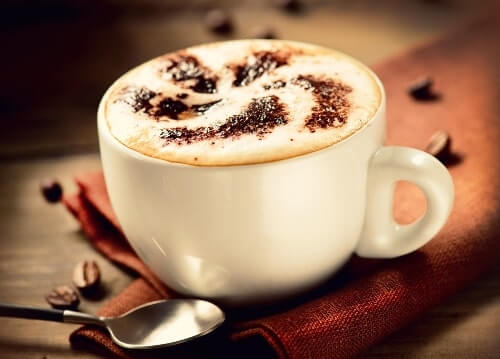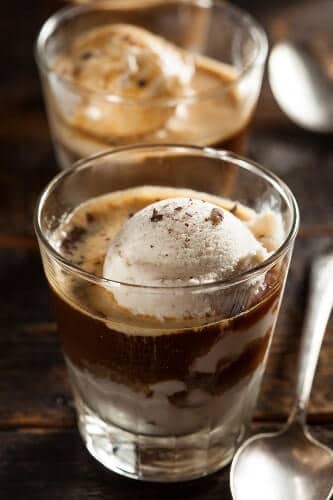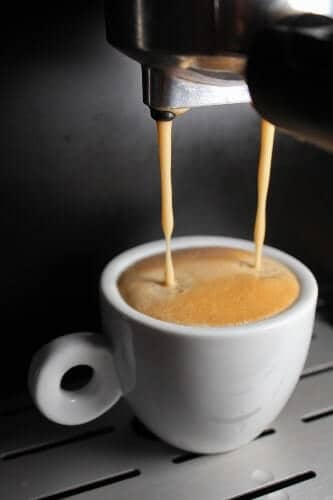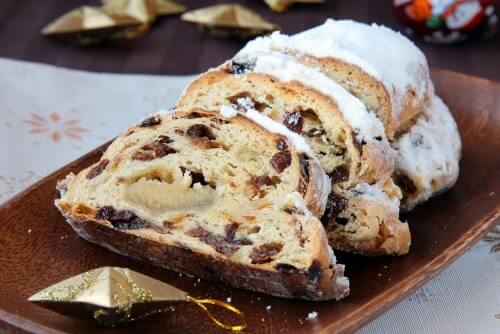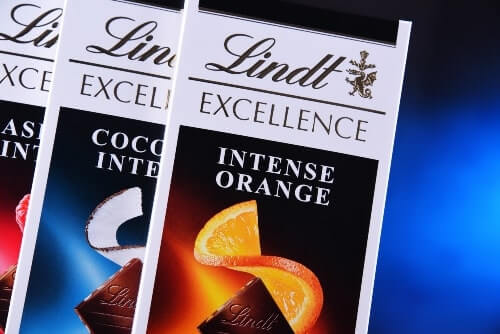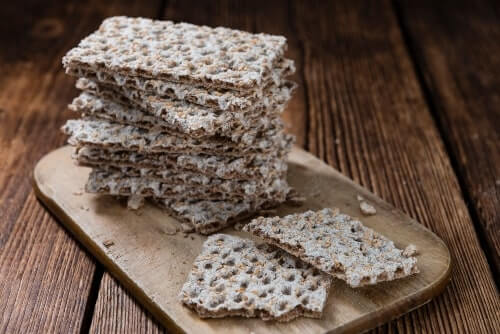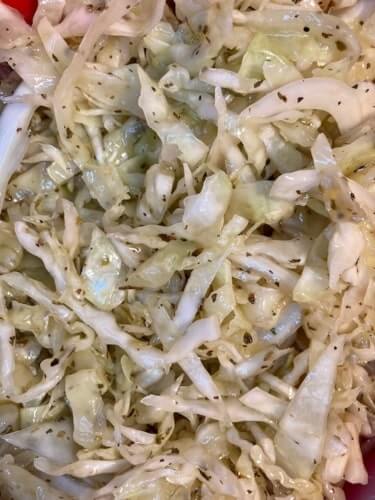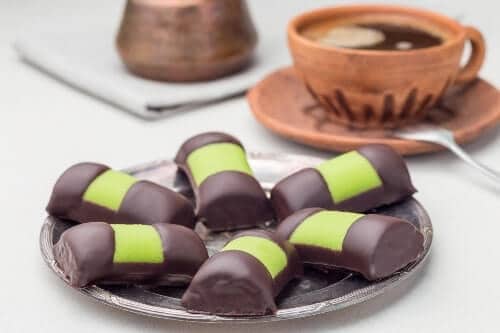10 Best Italian Coffee Types You Need To Try
Coffee consumption is a popular aspect of everyday life in many countries around the world. In some cultures, coffee is so embedded in their way of life that even little kids drink it. In fact, my grandma used to put a tiny bit of coffee in my mom’s milk when she was a kid growing up in Costa Rica. (However, I am not sure it’s still that way today … things may have changed since then.) Anyway, Italian coffee is such a big part of Italian culture and they have SO MANY different Italian coffee types that are very popular here in the United States and all over the world. Espresso, cappuccino, you name it! Please scroll below to learn more about these different types of Italian coffee drinks.
(There may be affiliate links in this post. Read my disclosure policy to learn more.)
Italian Coffee History
Italians take coffee-making, and drinking, very seriously.
In case you don’t already know, coffee beans were originally brought to Italy from the Middle East. Italians loved it so much that even Pope Clement VIII blessed its use even after having called it “Satan’s Drink”.
Legend has it that after having taken a sip of coffee, the Pope remarked:
“Why, this Satan’s drink is so delicious that it would be a pity to let the infidels have exclusive use of it.” (Quote taken from NPR.org).
The Pope’s “baptism of coffee” lead to the opening of the first coffee house in Rome in the year 1645.
List of Types of Italian Coffee
Here is a list of some of the more popular types of coffee in Italy, most of which will be elaborated on further on this page:
- Espresso
- Ristretto
- Double espresso
- Macchiato
- Marocchino
- Cappuccino
- Caffe latte
- Affogato
- Shakerato
- Caffè ginseng
- Caffè d’orzo
- Caffè con Panna
1. Espresso
One of the most common Italian coffee types is espresso.
Actually, espresso is the Italian’s most standard kind of coffee!
An espresso is a bitter shot of coffee that is meant to give people a quick boost of energy because of the large amount of caffeine it contains.
In Italy, one would order un caffè, which literally means a coffee, but it’s actually an espresso.
Many Italians enjoy drinking their coffee amaro, which means bitter. Basically, without any sugar.
(FYI, if the espresso is too bitter, it’s probably not made right).
However, there are plenty who do enjoy drinking their espresso with sugar, so don’t feel bad if you can’t stand the strong, bitter taste and need some help!
(Now, if you really like the taste of bitter coffee, or you’re looking for an EXTRA boost of caffeine, or you’re just super daring, you can ask for a DOUBLE espresso! You would say doppio espresso in Italian)
Please, check out this EXCELLENT video below by TheEspressoTV to learn more about this very common Italian coffee type.
Looking to make your own espresso? Lavazza is one of Italy’s most-sold coffee brands in Italy and it’s currently VERY popular on Amazon, too.
FYI, another popular and famous Italian coffee brand is Illy coffee.
2. Cappuccino
So, the next most common Italian coffee type is the cappuccino.
The main ingredients in a cappuccino are ⅓ espresso, ⅓ hot steamed milk, and ⅓ milk foam.
(FYI, you may have seen plenty of Instagram cappuccino photos with latte art, which is basically when a barista uses the milk foam to produce a picture (a heart drawing is very common).
Contrary to popular practice here in the United States, many Italians do not drink cappuccino past breakfast time. In other words, it’s a breakfast drink.
Here in the United States, people have become accustomed to drinking cappuccinos with non-dairy milk substitutes, like oat milk. Also, Americans enjoy flavoring their cappuccinos with cinnamon or powdered chocolate.
Also, in case you’re not already aware of this, cappuccinos are similar to caffè lattes, but they’re generally a lot smaller and have a thicker layer of milk foam.
Want to know how to make your own Italian cappuccino from home? If so, please check out this great video below by Dritan Alsela:
3. Caffè-latte
A caffè-latte is another example of one of the more popular Italian coffee types.
(In case you are not already aware of this, caffè-latte means “coffee and milk.”)
As you may be able to guess from the section above, cappuccinos and caffè-lattes are very similar. The one difference, though, is the quantity of milk.
Similar to the cappuccino, many Italians drink caffe lattes in the morning at home.
They generally make their lattes by brewing their espresso in a stovetop Moka pot and then pouring that into a cup of heated milk.
So, as you can see, the traditional caffe lattes do not have foam.
Isn’t that interesting??
However, outside of Italy, this type of coffee is made with a shot of espresso, steamed milk, and a thinner layer of milk foam.
Confusing, right?
Well, to help you out, I’ve included this AWESOME, AWESOME video below by Paddy & Scott’s:
FYI, here in the United States, there are SEVERAL different kinds of lattes, which DO NOT ALWAYS contain coffee. These include the following:
- Chai tea latte
- Matcha tea latte
- Turmeric tea latte
- London Fog (Earl Grey tea latte)
Related Articles
4. Macchiato
A macchiato is yet another example of one of the more popular Italian coffee types that people love to drink all over the world!
I’ve noticed that a lot of people here in the USA enjoy drinking a nice large cup of “caramel macchiato” from Starbucks.
(Please keep in mind that a caramel macchiato from Starbucks is WAY different than a traditional macchiato from Italy).
So, what exactly is a macchiato?
Well, first off, people in Italy normally drink macchiatos in the morning. However, they’ll sometimes drink it in the afternoon, too.
(In case you’re not already aware, Macchiato means “marked”, “stained” or “spotted.” In other words, you could say it’s a “stained” espresso.)
Basically, it’s an espresso with only about a drop or so of milk foam on top. So, you can basically say it’s an espresso “stained” with a spot of milk foam.
So, as you can see, macchiato has A LOT LESS milk than your typical caffè-lattes! However, in spite of this, it is still one of the more popular types of coffee in Italy.
Here, check out this great video by HowcastFoodDrink Howcast to see what I mean:
5. Marocchino (Espressino)
Another common name for this famous type of Italian coffee is espressino, which is the term that is generally used in the south of Italy.
The literal translation is “the little Moroccan” and it’s possible that the name derives from the color, which was a type of light-brown leather that was used in the 1930s to make hairbands.
Now, if you’re a chocolate lover, you’ll love the marocchino!
It consists of espresso, cocoa powder, and milk foam, and then it’s topped with more cocoa powder.
Interestingly, in some parts of Italy, your maracchino will have hot cocoa in it or even some…
Nutella!
YUM!!
Now, I must mention that some recipes for maracchino will ask for a ristretto instead of the standard espresso.
In case you’re not already familiar with ristretto, it’s a stronger and “shorter” type of espresso. Meaning, the ristretto is done in half the time it takes to make an espresso.
How is this done?
Well, you use less water, making the ristretto stronger than espresso.
Interesting, right?
So, some recipes for maracchino will ask for a ristretto for a more intense coffee flavor.
6. Affogato
Are there any dessert lovers out there?
If so, you are going to absolutely love this type of Italian coffee!!
Another term you’ll hear for this coffee dessert is affogato al caffe, which means it’s drowned in coffee.
Ok, so what is it!?
It’s plain or vanilla ice cream (or gelato) that’s “drowned” in (topped with) a shot of hot espresso poured on top.
Say what!?
YES!
And some places will add a shot of liqueur to it, too, like amaretto.
FYI, some people enjoy this espresso dessert with a side of biscotti or a similar cookie.
Doesn’t that sound SO GREAT!? DELICIOUS!
7. Shakerato
Are there any iced coffee lovers out there?
If so, then this kind of Italian coffee is for you.
The caffè shakerato is an Italian coffee that you may or may not have heard about.
It’s basically made with espresso and ice. You basically just shake the espresso with ice in a cocktail shaker and pour it into a tall glass (or a martini glass).
That’s it! Oh, but you can totally add some sugar, too.
8. Caffè Al Ginseng
This Italian cafe al ginseng is another one that you may or may not have heard about.
It’s just espresso mixed with ginseng root extract.
This is the perfect drink for those of you who love spiced drinks, say for like the holidays.
If you’re worried about this coffee tasting a bit bitter, it’s actually naturally sweeter than you might think!
9. Espresso con Panna
This literally translates to espresso with cream.
An Espresso con Panna is different from the Italian coffee types above because you with whipped cream instead of milk foam or steamed milk.
Do you like your espresso sweet? Well, then an Espresso con Panna should do the trick 😉
10. Caffè d’orzo
So, although many Italian coffee bars sell this famous Italian drink, it’s actually not coffee.
It’s a hot drink made from barley that some people enjoy drinking if they don’t like coffee.
(And it’s caffeine-free).
The thing about this drink is that you can order it in any style you wish as if it were a regular Italian coffee. For example, you can order this as a macchiato, cappuccino, or even as a marocchino.
Interesting, right?
Other Coffee Drinks That Are Not Italian
OK, so you might be thinking what about the frappuccino? Or what about the cortado (or piccolo)?
Well, frappuccino is actually a blended ice coffee drink that is made famous by Starbucks (an American chain of coffee houses).
And, a cortado is an espresso drink, from Spain, that you mix with warm milk.
What about the flat white?
A flat white is actually an espresso coffee drink popular in Australia and New Zealand. In case you’re not aware of this, it’s an espresso drink that you make with a double shot of espresso and topped with a flat layer of milk foam.
(The milk foam is not as foamy as a cappuccino, macchiato, or latte.)
Many people love its velvety texture which you make by blending the tiny bubbles in the milk foam with the espresso.
What To Eat With Italian Coffee Drinks
Ok, so now that you’ve gained a little bit more information on some of the best Italian coffee types, you’re probably asking what to eat with espresso.
Here are some ideas that you may enjoy eating with your Italian espresso coffee:
- Biscotti
- Crepe (called crespelle in Italian)
- Chocolate
- Fresh fruit
- Cheese
- Bread with Nutella
- Bombolone (Italian cream-filled donut)
- Sfogliatella (“Lobster-tail” in the USA – A type of Italian pastry)
- Cornetto (horn-shaped Italian pastry)
- Cannoli (tube-shaped Italian pastry with delicious cream filling)
- Tiramisu
Italian Coffee Types FAQs
Now, here are some answers to frequently asked questions about Italian coffee types.
What is Italy’s most popular coffee?
Arguably the most popular Italian coffee drink is the cappuccino. You make it with equal parts of espresso, steamed milk, and milk foam. Since it contains milk, most Italians do not drink this past 11 AM. The reason is that many people in Italy believe that milk disrupts digestion.
What is Venetian coffee?
Venetian coffee is an alcoholic coffee drink with hints of chocolate. It consists of coffee, brandy, dark creme de cocoa, and cream.
Why don’t Italians drink milk after 11?
As a general rule, Italians don’t drink coffee after 11 AM because they believe that the milk in the coffee will negatively affect their digestion.
Final Thoughts on Italian Coffee Types
And there you have it! What are your thoughts on some of these famous coffee styles from Italy? Do any of these popular Italian coffees seem especially interesting to you? Have you tried any of them before? Do you have a favorite? Please let me know in the comments below! I’d love to hear from you.
Recommended Products
